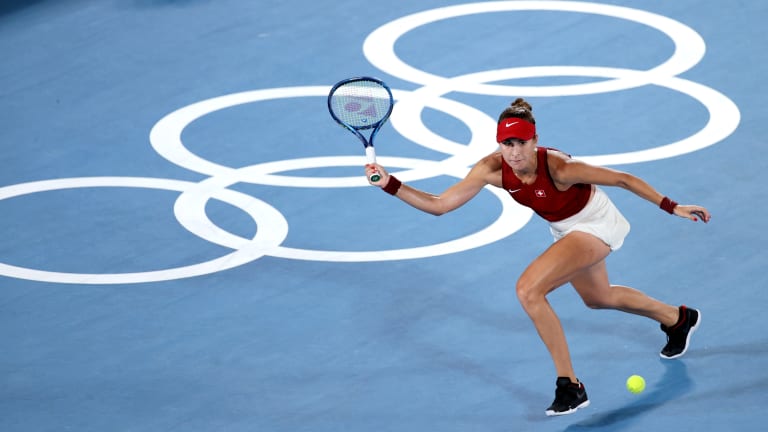Go ahead, assess the propulsive value of earning an Olympic gold medal in singles. This is arguably an impossible task. Consider the last two winners of the women’s event. Monica Puig played magnificent tennis in Rio four years ago—and since then has only once reached the third round of a major. Serena Williams was fantastic at the London Games in 2012, adding yet another jewel to a glittering crown.
And what about this year’s winner, Belinda Bencic? Her six wins in Tokyo—not including her silver medal-finish in women’s doubles with Viktorija Golubic—were capped off with four straight three-setters, each with score lines that suggested ample drama and the case for grit over dominance. In the round of 16, victory over Roland Garros champion Barbora Krejcikova, 1-6, 6-2, 6-3. Next, Bencic beat Roland Garros finalist Anastasia Pavlyuchenkova, 6-0, 3-6, 6-3. A semifinal win versus Elena Rybakina, 7-6 (2), 4-6, 6-3. And finally, in the gold medal match, Bencic took down Marketa Vondrousova, 7-5, 2-6, 6-3.
It’s an odd thing about Bencic. Such assets as sharp groundstrokes and keen court sense suggest the capacity for consistency. And yet, her career has been punctuated by a rollercoaster-like quality: moments when Bencic surfaces brilliantly, followed by exiles from tennis’ main street.
